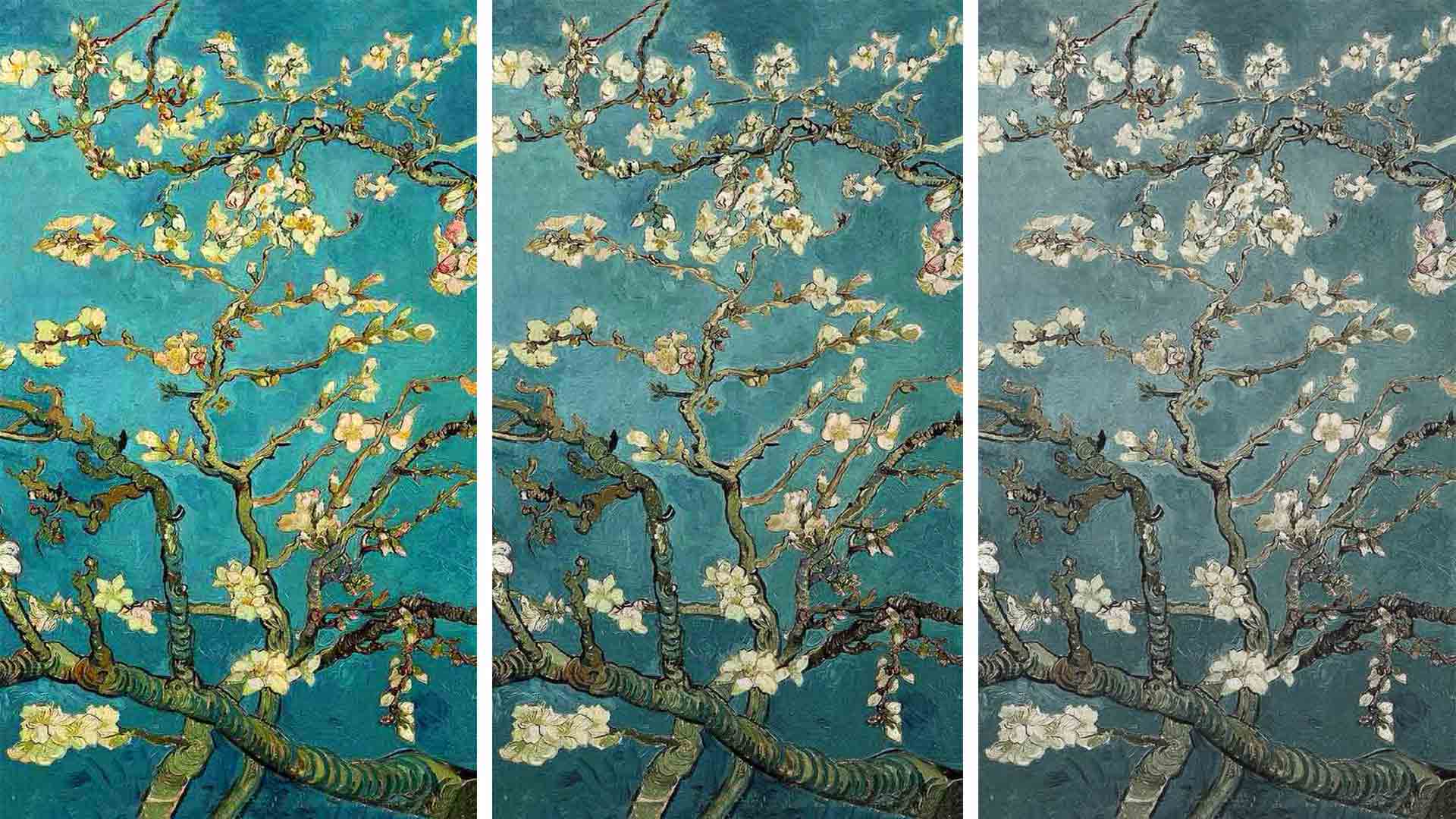The ins and outs
What is Colour Rendering?
If we were to give a definition of colour rendering, it would be something like this: “Colour Rendering is the ability of a light source to accurately render the colours of the objects”.¹ However, like almost everything that has to do with Physics (apologies to my professors), it’s easier to understand this with everyday examples: have you ever put on make-up while looking at your bathroom mirror and then you go to, let’s say, a restaurant mirror, and you don’t recognise yourself? Okay, maybe an exaggeration – but you realise that something is different? Or when you try new clothes on in a store and then you go out to the daylight for them to look like they’ve changed colour from one moment to the next? Well, these examples show that each light source reproduces the colours of the objects differently.
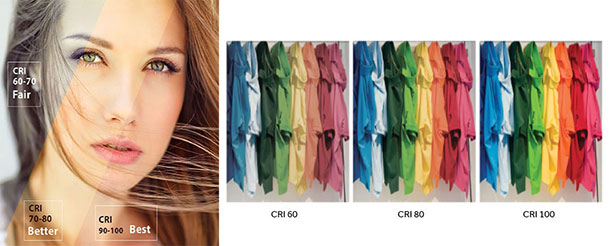
What is CIE Colour Rendering Index?
In the 1960s, the CIE Colour Rendering Index – aka CRI – was developed. What the CIE CRI does, is to measure how faithfully the light source in question reproduces the colours of the objects. To provide an objective indication of how well a light source renders the colours, the CIE Rendering Index Ra is used with a scale of 1 to 100, with 100 representing an excellent colour rendering.
Let’s try to understand how this index Ra is obtained. Simply put, there are two metrics: Ra8 and Ra14 – the most commonly used is the former. The Ra8 is based on how well the light source performs on a set of eight test sample colours, while the Ra14 on a set of 14 test colours.2 (R1-R8 form a set of pastel colours, R9-R14 represent colours like skin tones or vegetation.)
 The performance of the light source in question on the test colour samples is compared to the performance of a reference light source of the same CCT (Correlated Colour Temperature – read a step-by-step guide on this here). The average of this comparison is taken and after a certain mathematical process – which I’m not going to explain for obvious reasons – the index Ra is obtained. (If you enjoy Maths, you can further study the CIE 13.3-1995: Method of Measuring and Specifying Colour Rendering Properties of Light Sources (CIE, 1995).)
The performance of the light source in question on the test colour samples is compared to the performance of a reference light source of the same CCT (Correlated Colour Temperature – read a step-by-step guide on this here). The average of this comparison is taken and after a certain mathematical process – which I’m not going to explain for obvious reasons – the index Ra is obtained. (If you enjoy Maths, you can further study the CIE 13.3-1995: Method of Measuring and Specifying Colour Rendering Properties of Light Sources (CIE, 1995).)
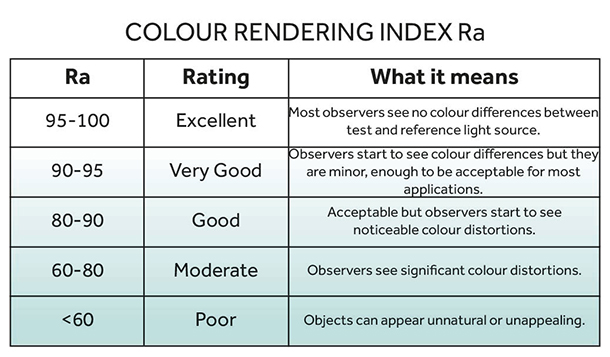
The table above shows the general ratings for the Ra indices and what they represent. Reasonably enough, the higher the Ra of a light source, the more accurately it renders the objects’ colours. With an Ra below 80, noticeable colour distortions begin to appear,3 while with an Ra less than 60, objects may start to look unappealing or unnatural.
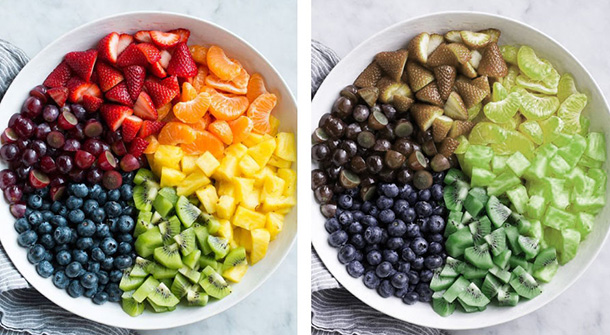
What does CRI mean for a lighting designer?
When a new project comes along, we, as lighting designers, need to select the appropriate luminaires and light sources for the space we want to transform with light. As said before, the higher CRI, the better the colour rendering. However, when it comes to implementing this in the design, how should the designer choose the suitable CRI? Of course, this depends on the type of space, its requirements and practical purposes. And, we should certainly not forget that subjectivity can play a role in our design in terms of aesthetics and the client’s wishes.
For most applications (seen in the table below), a minimum Ra80 is recommended. For example, grocery stores require very good colour rendering. We don’t want the products to look unnatural. Imagine being in a grocery store and seeing the fruit looking like the above right image! There are also spaces that usually need a higher CRI. For museums and galleries, light sources with greater than Ra90 are often required, however lighting is determined of course by the artwork and display requirements.
An interesting fact that should be mentioned is that although a light source has high CRI, it can render one particular colour poorly. For example, it can have excellent rendering ability on most test colour samples but not on, let’s say, the green ones. For this reason, also, two light sources with the same Ra can render the colours in a different way. This is simply explained because, as mentioned before, the CRI is obtained as an average and there could be many combinations of each of the individual test colour samples that give the same Ra.4 This is why it’s always good for designers to test the specific objects or artwork under the proposed light sources5 and determine afterwards which one provides the lighting result they desire.
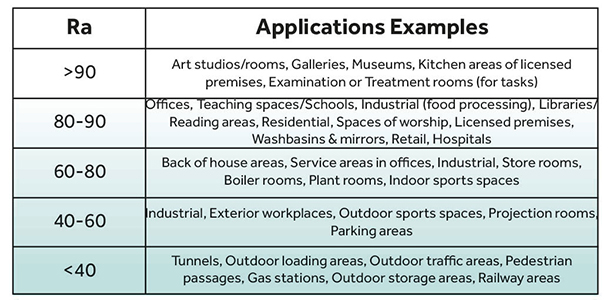
Good colour rendering doesn’t only have to do with objects and the architecture of the space, but also with people’s skin tone. Whether the light fittings make human skin appear healthy, flattering, or sick, affects how people feel and can create an emotional connection to the whole space. The designer should be mindful when choosing light sources especially in areas where a person’s appearance may be closely examined, such as hospitals, fitting rooms in retailing or beauty and cosmetics stores.6
A few years ago, Nulty completed a research project with University College London (UCL), supported by Xicato, in collaboration with a leading global cosmetics brand to study the impact poor colour rendering has on skin tones. Because skin is a rich and complex palette, accurate colour rendering is difficult. As a consequence, an issue that cosmetic retailers face is the number of customer complaints and returns due to mismatched foundation shades – because of poor CRI. Nulty’s research aimed to prove that by finding the correct CRI and Spectral Power Distribution (SPD) for colour matching, customers would be happier, product returns would be reduced, and makeup consultants’ lives made easier. As a result of the findings, the Beauty Series by Xicato was developed to produce a balance between beautiful, natural skin tones and colour discrimination, as well as making the products on display “pop”.7
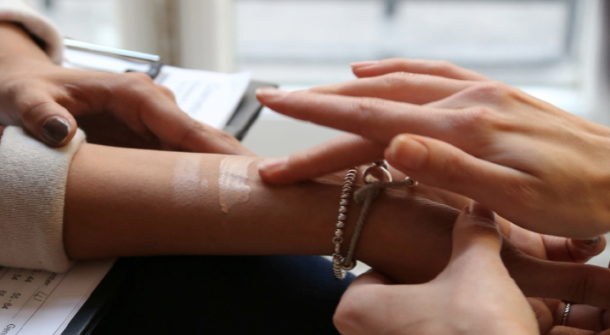
Before finishing up, it’s worth sharing some brief facts that are often misunderstood about CRI:
CRI is dependent on the objects (CRI is ‘invisible’ – you can understand it only by lighting the objects), but it doesn’t depend on colour temperature (different kinds of lamps with the same colour temperature can have different colour rendering ability). Also, it is independent of energy efficiency (the traditional incandescent lamp has low-energy efficiency but high CRI).
Finally, the CIE CRI has been improved since 1965, however the emergence of LEDs has shown some weaknesses in the CRI system. A new metric was published in 2015 that correlates better with the performance of LEDs, the TM-30-15.8 But let’s keep that for the next discussion!
Blog post by Eleanna Kafka


